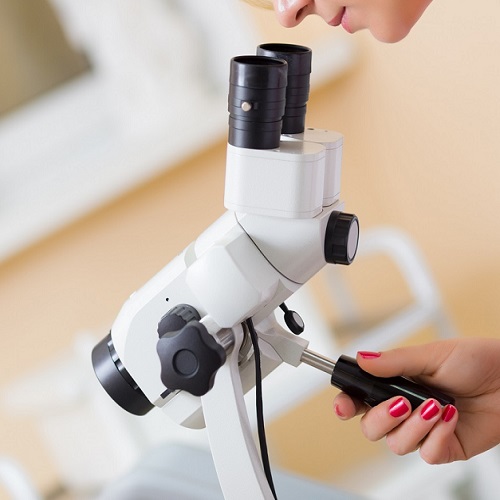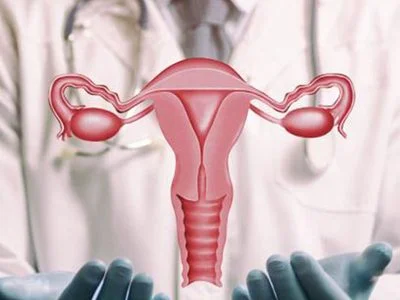All Departments
- PCOS Treatment
- STD Treatment
- Infertility Treatment
- Fibroid Treatment
- Endometriosis Treatment
- Ovarian Cyst Treatment
- Sexual Dysfunction
- Menopause Specialist
- Irregular Menstrual
- Laparoscopic Gynecologists
- Hysterectomy
- Urogynecologist
- Contraception
- Colposcopy
- AMH Testing
- O Shot
- G shot Treatment
- Vaginoplasty
- labiaplasty
- Clitoral Hoodectomy
- Vaginal Bleaching
- High-Risk Pregnancy
- Pregnancy Care
- Maternal Fetal Medicine
- Cesarean Delivery
- Painless Normal Delivery

Colposcopy
Colposcopy – What is it?
Colposcopy is a test that looks for symptoms of disease in your cervix, vagina, and vulva. The doctor will use a unique instrument called a colposcope during colposcopy.
If the results from the Pap test are abnormal, you will be advised to get a colposcopy. If the doctor discovers an atypical area of cells during your colposcopy procedure, a tissue biopsy sample can be obtained for laboratory examination.
Why is it important?
Colposcopy is a diagnostic procedure to identify various conditions affecting the female reproductive system. It serves as a valuable tool for detecting and assessing several gynecological issues. The key purposes of colposcopy include:
Genital Warts Detection: Colposcopy is utilized to identify the presence of genital warts, caused due to certain strains of the human papillomavirus (HPV). By closely examining the genital and cervical regions, healthcare professionals can visually assess and confirm the existence of these warts.
Inflammation of the Cervix: The procedure aids in the diagnosis of cervical inflammation. Inflammation can result from various factors, such as infections or irritations. Colposcopy offers a detailed examination of the cervix to determine the extent and nature of inflammation.
Precancerous Changes in Cervical Tissue: One of the primary applications of colposcopy is identifying precancerous changes in the cervical tissue. Abnormalities in the cervical cells, which may indicate potential development into cervical cancer, can be visualized and assessed during the colposcopic examination. This early detection is crucial for timely intervention and prevention.
Precancerous Changes in Vaginal Tissue: Colposcopy extends its diagnostic capabilities to detect precancerous alterations in the tissue of the vagina. By examining the vaginal walls and surrounding areas, healthcare providers can identify and evaluate any abnormal changes that may pose a risk of progressing to cancer.
Precancerous Changes of the Vulva: The procedure is also effective in identifying precancerous changes in the vulvar tissue. Through careful examination of the external genitalia, including the vulva, healthcare professionals can identify any cellular abnormalities that may necessitate further investigation or treatment.

The colposcopy procedure
Preparing for Your Colposcopy Examination:
Preparation for a colposcopy is straightforward, and you don’t need to undertake any specific measures. You can attend the appointment alone. However, some women bring a companion for support and assistance, especially if they prefer someone to talk to in the waiting room or provide transportation after the procedure.
During the procedure:
Our specialist will evaluate your medical history and current symptoms during the consultation before taking you to the examination room and asking you to undress from the waist down. A nurse will then assist you in becoming comfortable on the examination chair.
During the exam, a speculum is put into your vagina to hold back the vaginal walls and allow a better view of the cervix. The doctor then uses a colposcope, a magnifying glass that allows them to examine the cervix in great detail.
A liquid is then applied to the cervix so our doctor can inspect it for abnormalities. They may next extract one or two little tissue samples from your cervix. Some women report that the biopsy is painless, while others report that it causes crampy, period-like sensations. This crampy sensation usually only lasts a few minutes.
After the examination
The speculum will be removed after the examination, and you will be requested to remain on the examination couch for a few minutes. The assisting nurse will inform you when you can stand up and dress. After you have dressed, you will return to the professional, who will explain the examination.
If the specialist did not take a biopsy sample during your colposcopy, you will not be restricted from doing anything once your exam is finished. In the next day or two, you may notice some spotting or very minor bleeding from your vagina. The outcome of your colposcopy will determine whether you require more testing and treatment.
